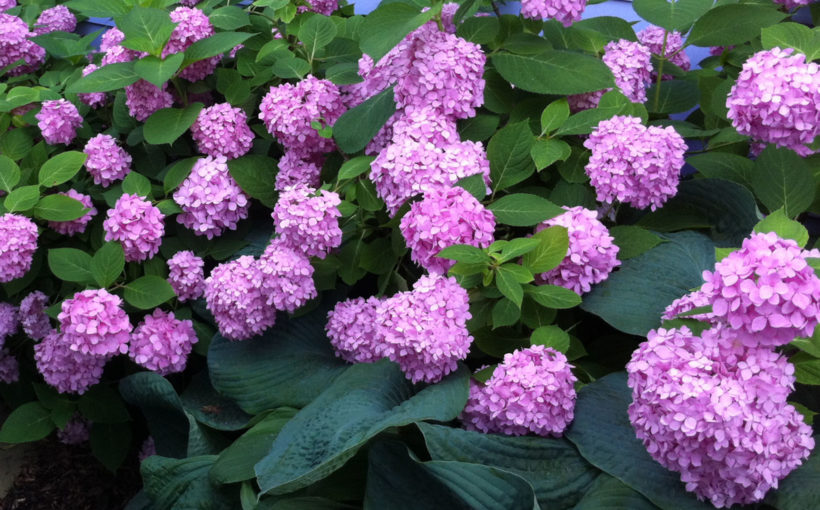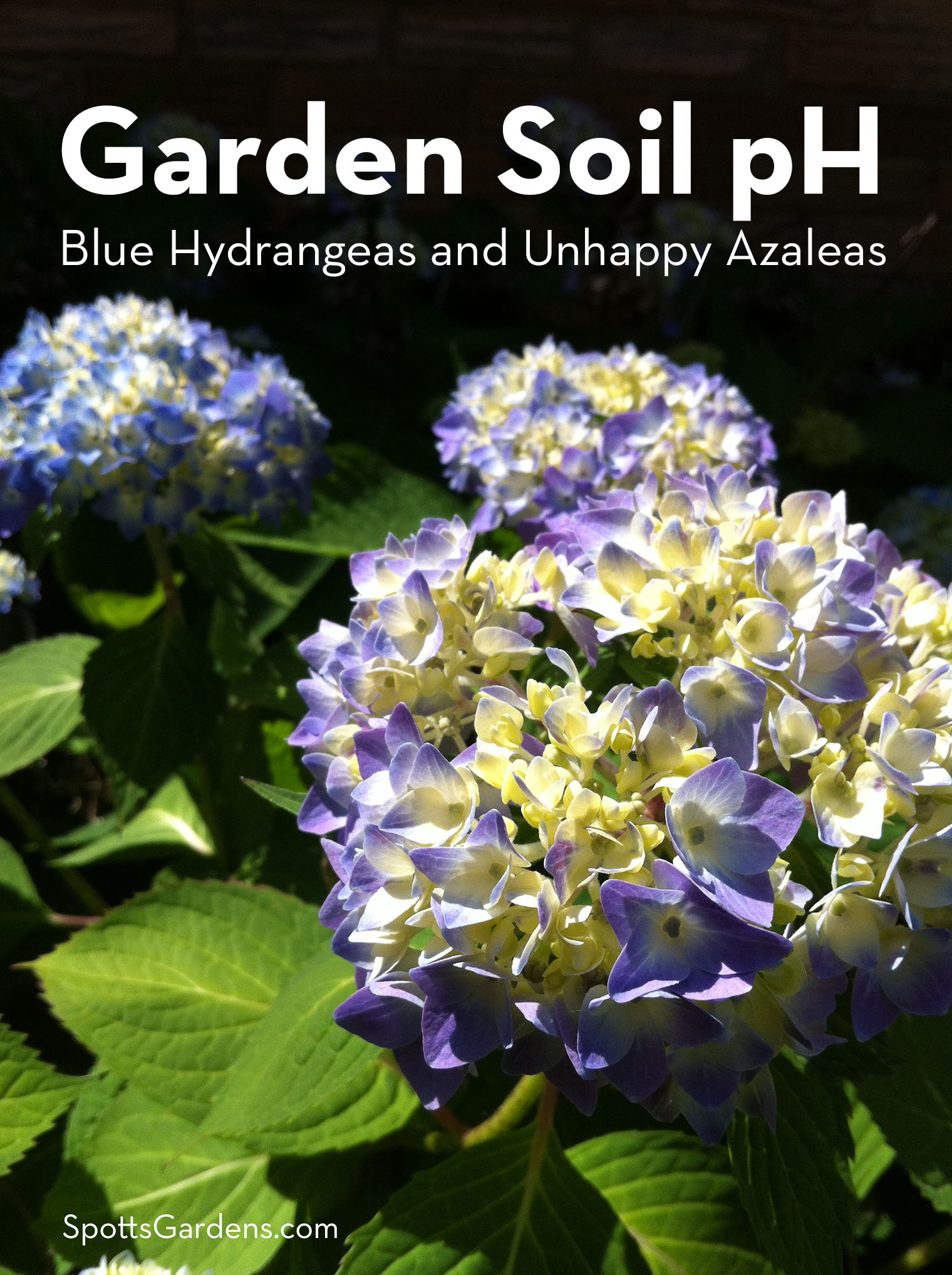One of the biggest factors affecting the health of plants in your garden is the pH of the soil, which is a measure of acidity. If the hollies or azaleas in your central Indiana garden always seem sort of sad, soil pH is probably affecting them.
Soil pH determines how easily your plants can take up nutrients from the soil around them. While many garden plants are adapted to a fairly wide range, certain plants—like azaleas, rhododendrons, hollies, and blueberries—are fussy about having acidic soil. And if your hydrangeas are blooming pink instead of blue? You’re gardening in alkaline soil.
Matching Plants with Soil pH Level
The pH scale runs from 0 (most acidic) to 14 (most alkaline), with 7 as a neutral pH. Anything below 7 is acidic; anything above is alkaline. The pH scale is logarithmic; a pH of 6 is 10 times as acidic as a pH of 7, and 100 times as acidic as a pH of 8.
Most garden plants prefer a slightly acidic soil with pH of around 6.5, although they’ll be happy in a range between 6.0 and 7.0. However, Indiana’s base layer of rock is limestone; our soil tends to be alkaline, from 7.2 to 7.8. Soil pH around concrete can be even higher.
As a result, many gardeners in central Indiana choose to attempt to lower the pH of their soil. But it’s almost impossible to change acidity of soil quickly, permanently, or over large areas. Many plants are adaptable to a fairly wide range of pH, so choose plants that suit your soil, rather than changing your soil to suit your plants.
Azaleas, Rhododendrons, and Blueberries
Certain plants absolutely require acidic soil (around pH 5.5) and will not be happy in anything else. Azaleas, rhododendrons, and blueberries may do well in the more acidic soil of southern Indiana, but they struggle here in the Indianapolis area.
If you must have an acid-loving plant, either grow it in a pot of acidic potting soil or look for a spot near a pine tree. The soil near needled evergreens like pines is usually a bit more acidic than the surrounding soil. (We strongly recommend growing your blueberries in a pot, not in the ground.)
Lowering Soil pH
While we don’t recommend trying to change pH wholesale, sometimes we will acidify soil to give a boost to specific plants. For example, hollies and fothergillas prefer acidic soil but are less fussy about it than azaleas. So even a small change in pH may make them healthier.
Hydrangea macrophylla blooms blue in acid soil and pink in alkaline soil. So if you want your hydrangeas to have blue flowers, you’ll need to acidify the soil.
Lowering pH with Sulfur
You can lower soil pH by adding soil sulfur (also called elemental sulfur). You should be able to buy it at a garden center. Avoid using sulfates, which are not appropriate for organic gardens.
Add sulfur at the rate of 2 pounds per 100 square feet. Sprinkle it around plants and water it in. Be sure to wear gloves, because it stinks, and the smell stays with you. Also, take off jewelry; sulfur will tarnish silver.
You’ll need to add soil sulfur every spring until you achieve the desired pH. We recommend a soil test every three years so you know what kind of progress you’ve made.
Other Methods for Lowering pH
To help lower pH, you can also mulch with pine needles or chopped-up oak leaves. While peat moss can also help lower pH, we avoid using it for ecological reasons.
Raising pH? Not in Central Indiana
If you’re a fan of English gardening books, you may run across references to “sweetening” the soil by adding lime. That advice is strictly for people who have acidic soil who are trying to raise the pH. Those people do not garden over a base of Indiana limestone.
Need some help getting your soil in shape? Contact Spotts Garden Service for a free estimate!

